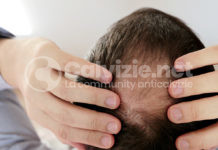1. Hello Dr. Lu Zhongfa. Can you please introduce yourself?
My name is Lu Zhongfa.
Department of Dermatology
The Second Affiliated Hospital,
College of Medicine, Zhejiang University,
Hangzhou 310009, China
EDUCATION:
Aug. 1982- July 1985: Medical student of The JingHua Medical College Zhejiang Province, China.
Aug. 1990 – July 1993: Candidate for MD in Department of Dermatology, Xin Qiao Hospital of The Third Military Medical University. Chongqing, China
Aug. 1995 – Aug 1998: Candidate for Ph.D. in Department of Dermatology, Southwest Hospital of the Third Military Medical University. Chongqing, China
Work History:
1 Aug 1985–Aug 1990. Residency, physcian and attending doctor, in Department of internal medicine, JinHua Worker Hospital, ZheJiang Province, P R China.
2 Aug 1993–Aug 1995. Attending doctor in Department of Dermatology, Xin Qiao Hospital of The Third Military Medical University. Chongqing, China
3 Aug 1998¡ªSep 2001. Attending doctor and director, in Department of Dermatology, Xin Qiao Hospital of The Third Military Medical University. Chongqing, China
4 Sep 2001– Vice professor, in Department of Dermatology, The second Affiliated Hospital, College of Medicine, Zhejiang University, Hangzhou 310009, China
RESEARCH EXPERIENCES:
Our major research is on the ability of dermal papillae cells to induce hair follicle regeneration.
In this study, we have adopted cell culture and other techniques to observe the expression of several molecules (such as bFGF, ET-1, SCF) within different passages cultured dermal papillae cells, and the influence of these dermal papillae cells on hair follicle growth and regeneration in organotypic culture and nude mice models of hair follicle regeneration. This is done to provide some experimental evidence of hair regeneration and is aimed for future treatment of alopecia (baldness) using dermal papillae cells by hair transplantation clinics.
PUBLICATIONS:
http://www.clonemyhair.com/dcforum/DCForumID1/285.html
2. What human cells are you using to clone new hair follicles’
Only dermal papilla cells from hair follicles in human trials will be used, but dermal papilla cells and hair follicle epithelial cells are needed in the animal trial.
3. What hair follicles were used as the source of these cells’ What part of the body did these hair follicles were from?
Anagen hair follicles from occipital scalp are used.
4. What part of the hair follicle do the epithelial cells that you use in your procedure come from? Is it hair matrix, outer root sheath, bulge etc?
The outer root sheath included bulge is used.
5. Are there any specific in vitro tissue culture requirements for both dermal papillae and hair follicle epithelium cells that you use’
Some cytokines are needed in DMEM medium. The digested hair follicle epithelium cells are directly used.
6. How long can you culture your cells for without loosing hair-forming properties’
6-8 passages or about 2 months.
7. How do you combine epithelial and dermal papillae cells before transplantation? Is is done as one mixture of in form of small pellets’
We can combine epithelial and dermal papillae cells in hair follicle organotypic cultures or in a small pellets. It is done such that the cultured hair papilla cells, dermal sheath cells and fibroblast of human scalp are mixed with the cells of hair follicle epithelium in different ratios, respectively, and then implanted into the subcutis of nude mice.
8. What is the success rate of transplantation?
The success rate is 30-50%, but I am sure it may be higher in human
trial.
9. How many hairs can you generated from one donor hair follicle’
I think that over 100 hairs could be generated from one donor in human trial, but in animal trial less hairs can be generated.
10. Do new hair follicles look normal’ Do hey produce normal hair fiber?
Some hair follicles have normal looking fibers. Others look abnormal, like these formed by trichoepithelioma – small benign tumor derived from basal cells in the hair follicle.
11. Is color of the hairs same as the color of the donor hairs’
Yes it is.
12. How long do the new hairs grow for?
New hairs grow for about about 6-8 weeks.
13. If there are any abnormalities in the structure of newly formed hairs, can you please mention them?
Please see above.
14. Are you planning to do human trials’ If yes, can you please give us some time frame’ Will this be done within 1 year, 2 years, 3 years or more’
If progressed as planned, it will be done within 2 years.
15. Who will be the candidate patients for your trials’
Volunteers with severe androgenetic alopecia and about 40 years old.
16. Will you accept foreign patients willing to try the procedure’
Volunteers are welcome; an individual from Britain has asked to be a volunteer, but we have not begun to do the trial in humans yet.
Thank you.
Thank you,
Lu Zhongfa

































